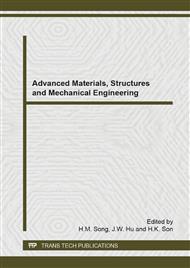p.1113
p.1119
p.1125
p.1134
p.1141
p.1145
p.1150
p.1160
p.1164
Modeling Interior Environment of Historical Building and Determination of Critical Places for Application of Nanotextiles Protection
Abstract:
Reconstruction of internal plaster in historical buildings belongs to significant and obvious treatment in a landmark area that helps protect irreplaceable cultural resources. Original form of historical buildings has been usually altered over time and alterations are an important part of the building's history. These interventions don ́t often respect the basic function of interior. Results of these changes cause plaster and painting decay, slow air flow and higher air moisture concentration. Computer simulation plays major role in determining places where is necessary to apply surface protection that will preserve the valuable interior surface against negative influences such as high level of moisture, fungus, chemical reactions etc. Abatement of negative influences within historic buildings requires particular care if important historic finishes are not to be adversely affected. Reconstruction of historical interiors should be designed to minimize visual changes to a historic building. Choosing the most appropriate treatment for a historical building requires careful decision making about using of appropriate material for renovation. Using of nanofibers should be minimal modifications to the historic appearance and protect from negative influences.
Info:
Periodical:
Pages:
1141-1144
Citation:
Online since:
September 2014
Authors:
Price:
Сopyright:
© 2014 Trans Tech Publications Ltd. All Rights Reserved
Share:
Citation:



